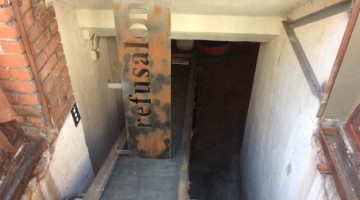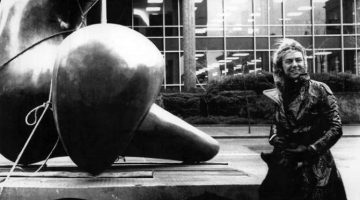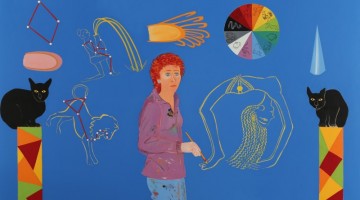Material carries meaning, especially if it’s a relatively uncommon one, like pâte de verre. If you’re not an art nerd or the sort of person who’s into decorative arts—these people also watch “Glee”—you may need an explanation: pâte de verre is a 19th century glass-making technique that uses molds. Glass powders or small pieces are mixed with a binder into a paste, which is brushed onto the mold and then fired in a kiln. The glass paste’s application allows for a precision that’s unachievable in glass blowing. Auguste Rodin’s fleshy masks are exemplary of pâte de verre’s best qualities: opacity with depth, subtlety. The worst examples of the medium are not the vases, candy dishes, and paperweights that look like they were made from pre-chewed gum drops, but the flowers and figures of naked women that adorn them that take the medium’s potential for precision to the point of lifelessness.
Bay Area artist Gay Outlaw’s experiments in pâte de verre at Gallery Paule Anglim resemble fancy candy—the Italian kind that doesn’t taste as good as it looks. Outlaw is primarily known for her sculptures in bronze, pencils, and cakes (according to “Sculpture” magazine, she studied at the École de Cuisine La Varenne in Paris) so it makes sense that her work would be almost plausibly edible. Her subjects in pâte de verre are banal, (a chair, pieces of a cactus, a mosquito bag), but their nearly surreal colors, sharp lines, slight glitter, and just the right amount of visible hand-skill make them tantalizing. Funnily, the uniqueness of the medium is most visible in her only obviously food-related and least tasty-looking sculpture, “Graham Board.” Resins would make a more plausible faux cracker, but in Outlaw’s use of opacity, color and texture on something entirely brown narrows focus to emphasize how much pâte de verre is like oil painting. Materially, the two mediums are actually pretty close. Like a painting, the depth of the semi-opaque glass must be seen in person to be fully appreciated.
Gay Outlaw’s subjects in pâte de verre are delightfully different from the flora, fauna, and dancers characteristic of 19th century examples of the medium. There is a lot to read into, symbolically speaking, in a cactus (Mescaline, self-protection) gently intertwined with another, or a chair (success, obedience), but Outlaw is a strictly process-oriented artist. In an interview with “SFGate,” Outlaw said:
I’m engaged in a process of open-ended experimentation and observation, and I think that the art is what punctuates that investigation.
Her work is about the process, not the product. She seems like she’d enjoy a material geek-out, but not a psychological one. Experiencing the essential character of pâte de verre in contemporary art is reason enough to make the trip.
“Gay Outlaw – New Work” is on view at Gallery Paule Anglim through December 22.
-Kendall George
Citations:
Castro, Jan Garden. “Gay Outlaw,” Sculpture November 2006: p 75-6. Web 17 November 2012. http://hosfeltgallery.com/reviews/outlaw_sculpture06.jpg.
Whiting, Sam. “Artist Gay Outlaw to open 1st solo show in 3 years,” SFGate. 28 June 2012. Web 17 November 2012. http://www.sfgate.com/art/article/Artist-Gay-Outlaw-to-open-1st-solo-show-in-3-years-3668180.php.






